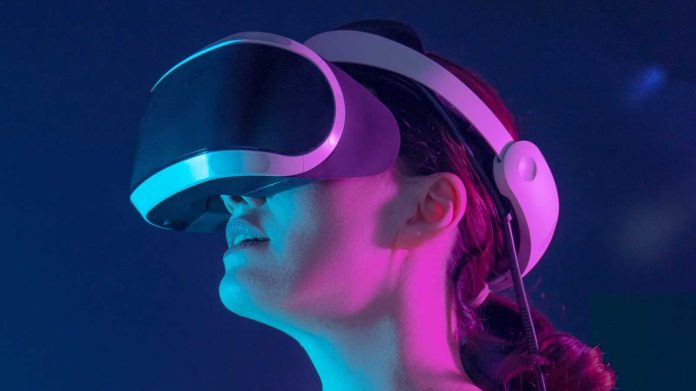Virtual reality is popular these days for activities ranging from gaming to military training. Although this technology is designed to mimic the real thing, UCLA neurophysicists have found that the brain reacts differently to virtual reality it does to the real world. They note that their research maybe significant for people who use virtual reality for gaming, military, commercial, scientific, or other purposes. The study was published in the journal Nature Neuroscience.
“The pattern of activity in a brain region involved in spatial learning in the virtual world is completely different than when it processes activity in the real world,” explained senior author Mayank Mehta, PhD, director of the W.M. Keck Foundation Neurophysics Center and a member of UCLA’s Brain Research Institute. He added, “Since so many people are using virtual reality, it is important to understand why there are such big differences.”
Dr. Mehta and his team conducted a study of the hippocampus, which is a region of the brain involved in diseases such as stroke, schizophrenia, Alzheimer’s, depression, epilepsy, and post-traumatic stress disorder (PTSD). The hippocampus is also important for the creation of new memories and the development of mental maps of space. For example, when an individual explores a room, hippocampal neurons activate and provide a “cognitive map” of the environment. The mechanisms whereby the brain creates these cognitive maps is unclear; however, researchers have theorized that the hippocampus computes distances between the subject and surrounding landmarks, such as mountains and buildings. In addition, when a person is in a real maze, other cues, such as sounds and odors can help the brain calculate spaces and distances.
The researchers tested whether the hippocampus could actually produce spatial maps using only visual landmarks; they created a noninvasive virtual reality environment and studied how the hippocampal neurons in the brains of rats reacted in the virtual world without the aid of sounds and odors. They put a small harness around rats and placed them on a treadmill surrounded by a “virtual world” on large video screens. They described the virtual environment as even more immersive than an IMAX screen. The investigators measured the rodents’ behavior and the activity of hundreds of neurons in their hippocampi, explained Lavanya Acharya, a UCLA graduate student.
The researcher team also measured the rats’ behavior and neural activity when they were placed in a real room designed to look identical to the virtual reality room. They were surprised to find that the results from the virtual and real environments were completely different. In the virtual world, the rats’ hippocampal neurons appeared to fire totally randomly, as if the neurons were unaware of where the rat was, even though the rodents appeared to behave normally in the real and virtual worlds.
“The ‘map’ disappeared completely,” noted Dr. Mehta. He added, “Nobody expected this. The neuron activity was a random function of the rat’s position in the virtual world.” Zahra Aghajan, a UCLA graduate student, added, “In fact, careful mathematical analysis showed that neurons in the virtual world were calculating the amount of distance the rat had walked, regardless of where he was in the virtual space.” The team was also surprised to find that the rats’ hippocampal neurons were highly active in the real-world environment; however, more than half of those neurons shut down in the virtual space.
Dr. Mehta noted that the virtual world used in the study was very similar to virtual reality environments used by humans, and it would be extremely difficult to distinguish them from neurons in the human brain. He concluded, “The neural pattern in virtual reality is substantially different from the activity pattern in the real world. We need to fully understand how virtual reality affects the brain.”
In addition to examining the activity of individual neurons, the researchers studied larger groups of the brain cells. Past research, including studies by his team, have rfound that groups of neurons create a complex pattern using brain rhythms. “These complex rhythms are crucial for learning and memory, but we can’t hear or feel these rhythms in our brain. They are hidden under the hood from us,” explained Dr. Mehta. He added, “The complex pattern they make defies human imagination. The neurons in this memory-making region talk to each other using two entirely different languages at the same time. One of those languages is based on rhythm; the other is based on intensity.”
Every neuron in the hippocampus simultaneously speaks the two languages noted Dr. Mehta said. He compared this occurrence to the multiple concurrent melodies of a Bach fugue. The researchers noted that in the virtual world, the language based on rhythm has a similar structure to that of the real world, even though it says something completely different in the two worlds However, the language based on intensity is entirely disrupted.
Dr. Mehta explained that when people walk or attempt to remember something, the activity in the hippocampus becomes extremely rhythmic and these complex, rhythmic patterns appear. Those rhythms promote the formation of memories and the ability to recall them. He proposed that in some individuals with learning and memory disorders, these rhythms are impaired. He explained, “Neurons involved in memory interact with other parts of the hippocampus like an orchestra. It’s not enough for every violinist and every trumpet player to play their music flawlessly. They also have to be perfectly synchronized.”
Dr. Mehta is of the opinion that by retuning and synchronizing these rhythms, physicians may be able to repair damaged memory; however, accomplishing this is extremely challenging. He explained, “The need to repair memories is enormous” because neurons and synapses (the connections between neurons) are extremely complex. Previous research conducted by Dr. Mehta found that the hippocampal circuit rapidly evolves with learning and that brain rhythms are essential for this process. He explained that he conducts his research with rats because analyzing complex brain circuits and neural activity with high precision is currently not possible in humans.















